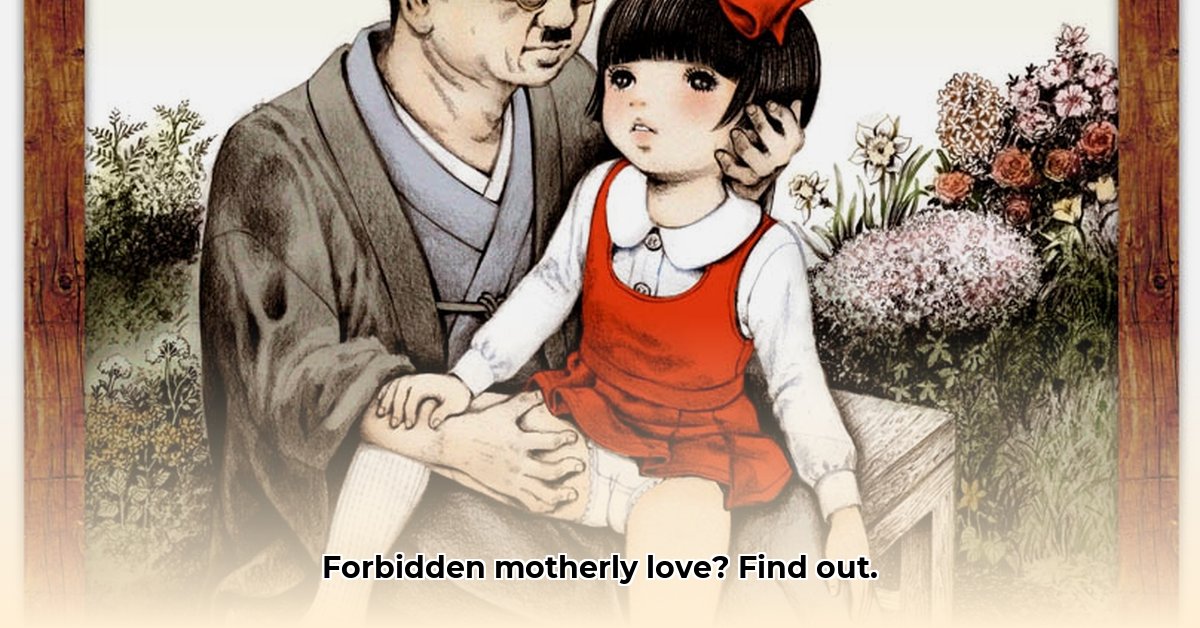
Narrative Analysis: A Family Drama with Taboo Themes
"Taboo Charming Mother," an adult animated OVA, explores the complex and controversial theme of forbidden romance within a family context. While the title immediately signals its provocative nature, the OVA attempts a nuanced portrayal of the emotional turmoil and ethical dilemmas inherent in its subject matter. The animation style, while not groundbreaking, is competently executed, presenting attractive characters and visually pleasing scenes. However, the narrative pacing presents a mixed bag; some scenes resonate emotionally, effectively highlighting the central conflict, while others feel rushed or unnecessarily drawn out, potentially leaving viewers unsatisfied.
The storyline itself, while not entirely original, manages to engage viewers in the characters' journey, prompting reflection on the choices made and their consequences. The creators intentionally use the mature content, not for gratuitous shock value, but rather as a tool to underscore the central conflict and the emotional weight of the characters' situation. However, a crucial question emerges: Does the narrative's attempt at depth compensate for its uneven pacing and somewhat predictable storyline? This subjective evaluation will vary from viewer to viewer. Did the mature themes, handled with a certain artistic sensibility, enhance the emotional impact, or did they overshadow other narrative aspects?
Market Analysis: A Niche Success Story?
"Taboo Charming Mother's" release across VHS and DVD formats indicates a strategy targeting a specific audience. Its availability (or lack thereof) in varied regions suggests a calculated approach to market penetration, recognizing the sensitivities and differing legal environments surrounding adult-themed animation. Yet, precise sales figures are unavailable, limiting a conclusive assessment of its financial success. However, its continued availability through re-releases hints at a dedicated niche fanbase within the adult animation market. The question becomes: Did the OVA's market success stem from genuine audience demand or simply from the inherent curiosity surrounding its provocative title and taboo themes? Was the distribution strategy, focused on a specific niche audience rather than broader appeal, ultimately effective?
The OVA's relative obscurity in mainstream markets points to a possible limitation: its specific content may have restricted its broader appeal. This underscores the crucial need for targeted marketing strategies adapted to different cultural contexts and regional regulations. Did the production studio utilize sufficient marketing efforts catering to the appropriate target audience, or were opportunities to expand its audience missed? Further research in this area could reveal important insights into the complexities of the adult animation market.
Actionable Intelligence: Future Strategies
Analyzing "Taboo Charming Mother's" reception suggests several actionable strategies for future productions:
Targeted Streaming Distribution: Secure rights on adult-oriented streaming platforms, maximizing accessibility to the target demographic. This strategy, if implemented correctly, could significantly increase viewership.
International Expansion: Explore strategic partnerships for international distribution, navigating diverse legal landscapes and cultural sensitivities. Success here requires a thorough understanding of international laws and cultural nuances.
Community Engagement: Cultivate an engaged online community, fostering fan interaction and organically promoting future projects. This approach, known for its effectiveness, could lead to increased organic growth.
Conclusion: A Case Study in Taboo and Success
"Taboo Charming Mother" presents a complex case study in adult animation. While its narrative structure and pacing offer room for improvement, its approach to taboo themes and its strategic market positioning demonstrate a certain degree of success, at least within its niche. However, the lack of concrete sales data prevents a definitive assessment of its overall commercial performance. The OVA's continued existence suggests a dedicated fanbase, yet its limited mainstream visibility highlights the challenges of navigating the complexities of adult animation distribution in a diverse global market. Its success, or lack thereof, ultimately underscores the delicate balance between artistic expression, market realities, and the legal and ethical considerations surrounding adult content. Further research and data are needed for a more comprehensive evaluation of its impact and long-term significance.